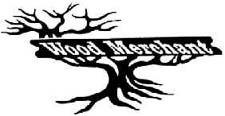
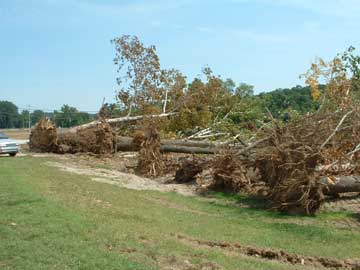
 |
|
Branson Landing Logs Site Photos
| It
was Thursday, June 24, 2004. Rick Braun had just began to read the
morning paper when he came across the Ozarks section of the Springfield
News Leader. There, on the front page of the section, was an image
of the Taneycomo Lake front being cleared to make way for the new, 300
million dollar, Branson Landing Development. Within this image were
huge old-growth trees bull-dozed over with their root balls exposed and a
large plume of smoke rising into the sky where some of the trees were
being incinerated. At that moment, Rick knew he had to do something
to save those old-growth trees from the burn pile.
He drove down to the Branson Landing construction site to survey the damage and find out who owned the trees that were being dozed and burned. A logger had the contract to remove any saleable timber from the site. After a brief conversation with the logging contractor an agreement was reached that the Wood Merchant would purchase any of the logs that were too large or unfit for sale to the saw mill. In the end, a deal was made to purchase all of the remaining logs from the logging contractor. Many of the trees on the landing were not prime lumber logs and would likely have been milled and put into pallets or dunnage. Any unusable or undesirable species of trees would likely be burned. Though the Wood Merchant had salvaged small quantities of timber from the area farmers and developers, this would be the first time to purchase nearly 200 logs at one time. With approximately one-third of these logs being larger than 3 feet in diameter, and some, as large as 5 feet in diameter at the base, and with lengths between 8 and 18 feet , the logistics of moving these logs to the storage yard at the Wood Merchant Design Studio became a problem. After much research and lengthy negotiations with several local log haulers with "picker" trucks we were able to have the logs transported from the Branson Landing site to our Design Studio located in Lampe, Missouri. After two mechanical breakdowns and approximately 6 weeks of time between repairs and re-scheduling of the trucks to haul the logs, we finally had the majority of the logs in our front storage yard. It took seven full sized loads using "picker" trucks with trailers to haul the logs. The exceptions were two enormous cotton wood logs that were left on site because they were too heavy for the "picker" trucks to lift. These logs we would later mill on site using a two-man chain saw. Visit the Sawing & Processing Gallery to learn more about how these huge logs are milled into slabs. More information can be found about the Branson Landing Logs by visiting the other Branson Landing Logs photo gallery links (Log Hauling Photos and Log Storage Photos) and reading the Crafting a Slab of Branson's History article published in the Springfield News Leader, September 28, 2004. Below is a small selection from the site photos taken by Rick Braun on June 24th through June 26th, 2004. |
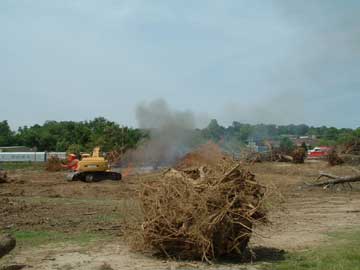 |
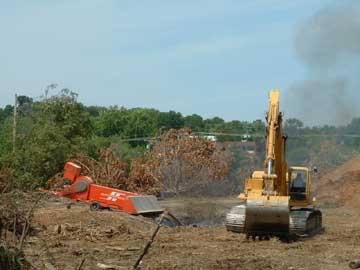 |
| A root ball of one of the dozed massive trees lingers in the foreground while other limbs and root balls burn in the pit in the background. | In an effort to reduce smoke emissions and quicken the incineration process the burning limbs and roots were fanned continuously by a huge blower fan. The limbs and root balls were placed in the burn pit by the track-hoe. |
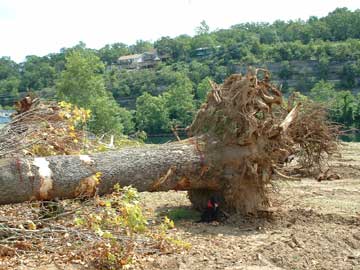 |
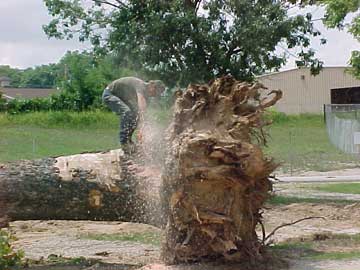 |
| The sad reality of development. Removing the old to make room for the new. This is one of the many old-growth sycamores that were removed. | The loggers made quick work of "bucking" the huge trees into various length logs. Rick marked most of the lengths for the loggers and strived to keep the logs as long as we thought we could handle. |
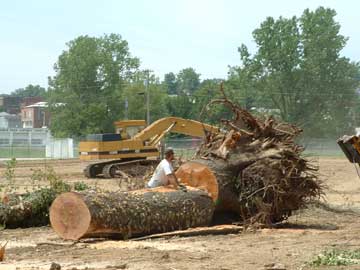 |
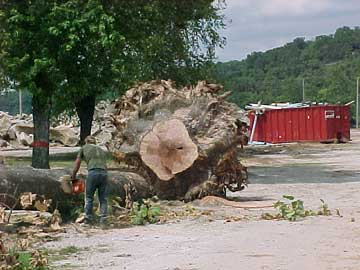 |
| A bucked sycamore log section with the root ball in the background. The man standing next to the log gives some scale as to how large some of the old-growth trees were. | One of the logging contractor's employees "bucking up" one of the larger logs into smaller sections. |
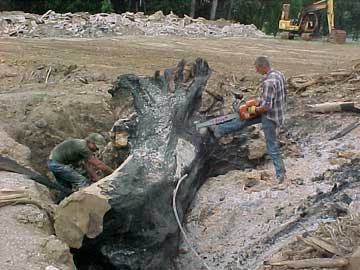 |
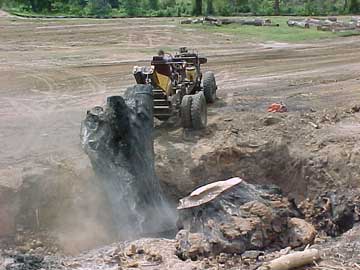 |
| A maple tree had made it to the burn pit. Rick requested that the logger buck this section and pull it out of the burn pit so that we could salvage it. The logger stood on hot coals to cut the root ball free from the trunk. What a trooper! | Special equipment skidding the maple tree out of the burn pit. After all that work the tree ended up being "big time" hollow. The hollow spot can clearly be seen on the root ball section. Sometimes you just don't know until you cut the tree. |
| Back to Log & Raw Material Gallery | Back to Main Gallery |
| Home | Ordering |